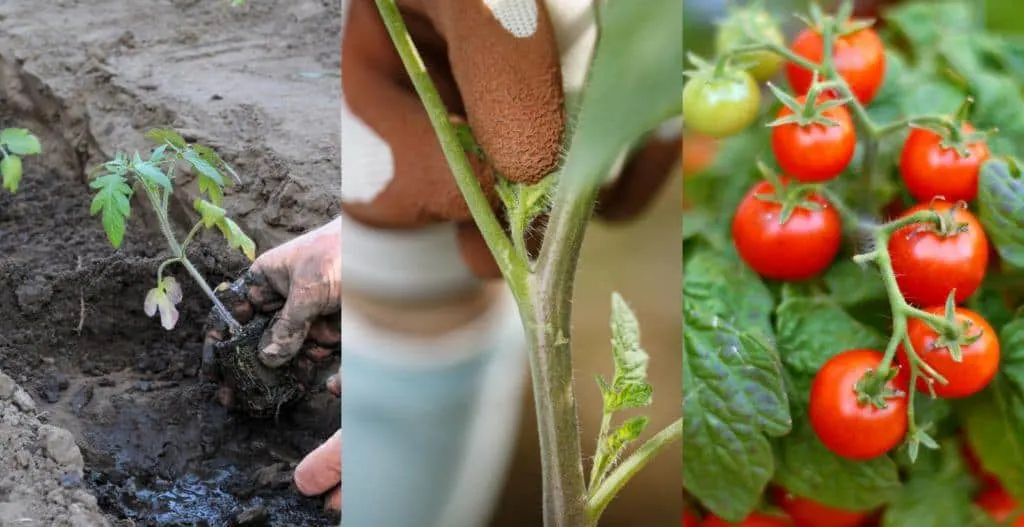
Most backyard gardeners aspire to grow their own tomatoes, only to be overcome with issues along the way, leading them to give up completely.
You may think you have a black thumb because you’ve failed at growing tomatoes, and I’m here to tell you, you’re wrong.
Growing tomatoes is easy when you have all the tips and tools to find success.
With the proper knowledge, anyone can grow giant, beautiful tomato plants!
While all the tips on this list will help you finally find success with growing tomatoes, there are two that are of the utmost importance. People who fail at growing tomatoes most often ignore one or both of these tips.
Two Common Reasons You’ll Fail At Growing Healthy Tomato Plants
The two biggest reasons people don’t find success with tomatoes are simple. They don’t give the tomatoes enough sunlight, or they don’t give them enough nutrients.
That’s it!
Tomatoes are hungry plants, and it’s absolutely essential to give them exactly what they need so they can produce a big beautiful crop.
Read on to find out the exact sunlight and nutrient requirements for tomatoes!
10 Pro Tomato Growing Tips:
1. Pruning
While this is a hotly contested tip, we believe that pruning tomato plants helps them to thrive.
Pruning extra branches does indeed cut down on the amount of fruit you’ll get, but it also improves the health of the plant, and in the long run leads to stronger plants that will surely last through the whole season.
Tomato plants produce suckers, extra branches that grow out of the V between the main stem and tomato branches.
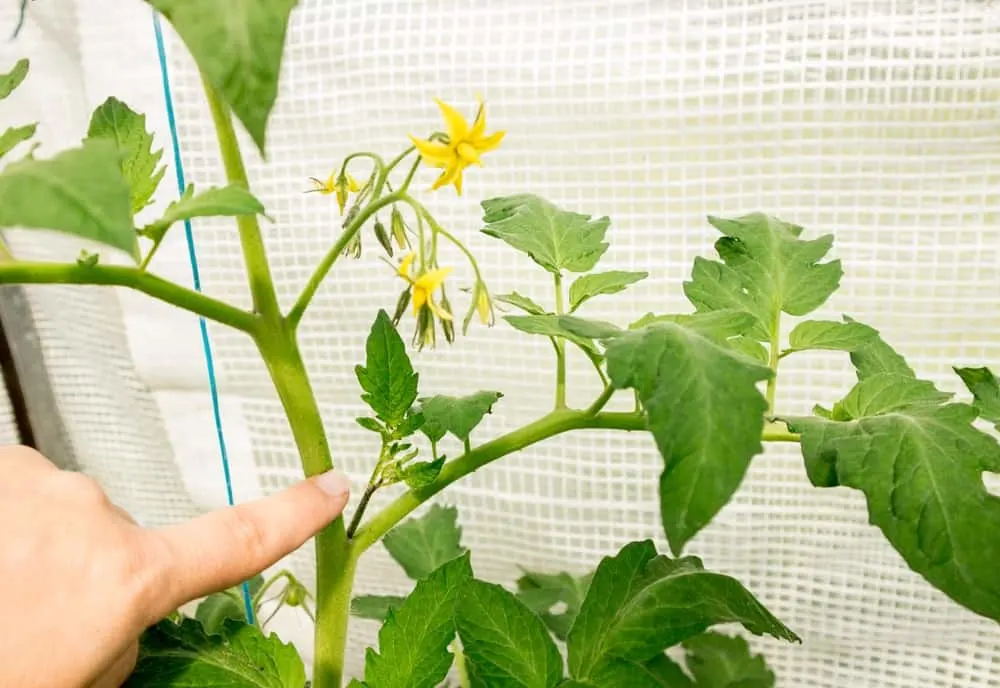
These suckers, if allowed to grow, will produce fruit, but will also crowd out the other branches in search of sunlight.
This can lead to fungal issues from the plant not getting enough air circulation. It can also cause fruit to ripen slowly or not at all.
To prune your tomatoes, simply cut off the suckers as soon as you see them forming.
Here’s our photo tutorial showing you how to prune off tomato suckers.
It’s also necessary to prune off any leaves or branches that are dead or dying. This will allow the tomato plant to send energy only to healthy branches, promoting more growth and fruit.
2. Feeding
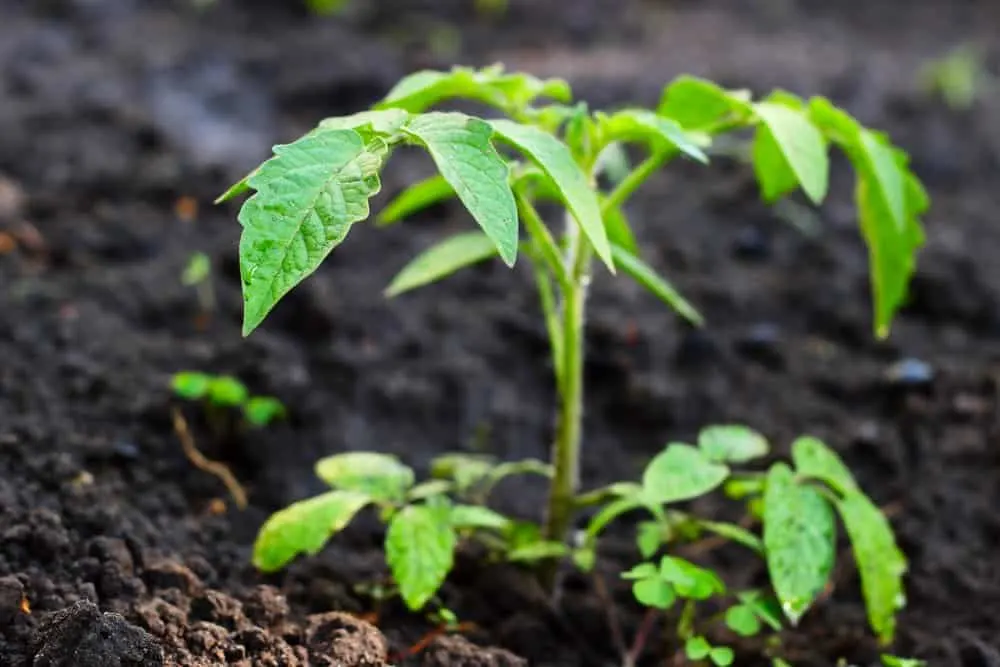
Tomatoes are amongst the hungriest of backyard vegetables. They absolutely must have an abundance of sunlight and soil nutrients in order to thrive.
Lack of nutrients in the soil is the second reason most people fail at growing tomatoes. Tomatoes particularly need a lot of nitrogen to grow strong and tall, and more importantly, to develop delicious fruits!
The best way to give your tomatoes exactly what they need is to start with rich, fertile soil.
The soil that’s already laying in your backyard is likely not good enough, neither is your average bag of potting soil.
While most vegetables and fruits can grow without issue in average soil, tomatoes truly need a huge nitrogen boost, and they depend on you to provide it.
Growing tomatoes in a raised bed garden, or a no-dig garden, is the best way to provide them with the exact soil that will help them thrive.
When preparing the bed, mix 1 part compost with 1 part soil. This rich mixture will give your tomatoes the big boost they need right from the start.
If you’re unable to add a lot of compost to the soil, you can supplement with an organic tomato fertilizer – such as Dr. Earth Organic Tomato Fertilizer – throughout the growing season. Tomato-specific fertilizer contains exactly the right balance of nutrients for tomatoes.
Read Next: My Homemade Tomato Fertilizer Recipe Perfected Over 30+ Years
3. Sun Needs
While some gardeners may find minimal success with growing tomatoes in partial sun, full sun is truly necessary for big bountiful plants.
Full sun means that each tomato plant is getting at least 6 hours of full blast sunshine per day.
4. Watering
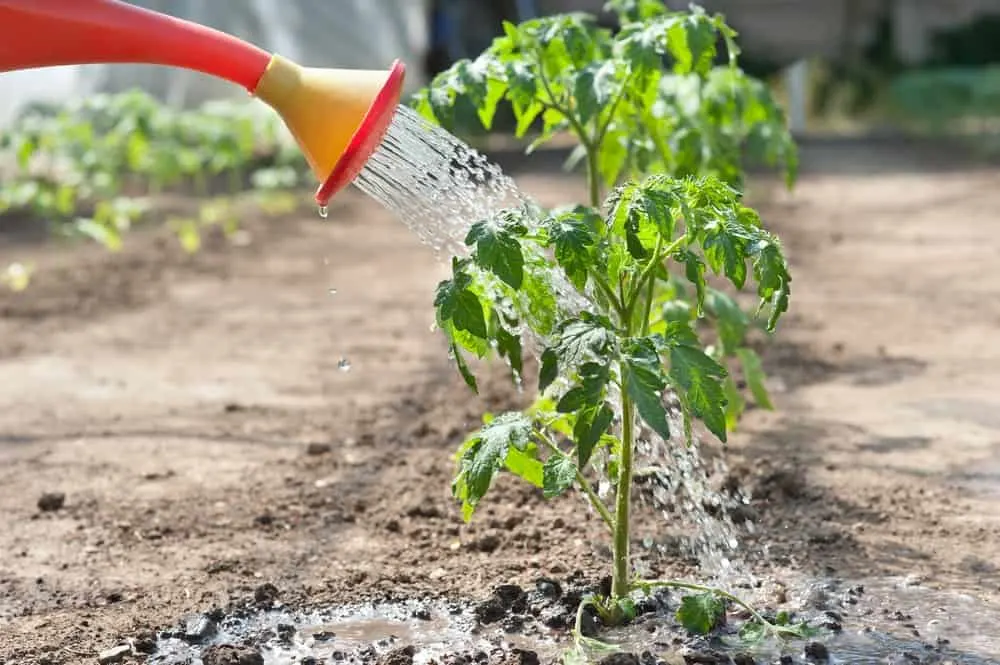
Tomatoes are not only hungry plants, they also tend to be quite thirsty!
Tomatoes grown outside in the ground will get most of their watering needs from good old mother nature, but in times of extreme heat and drought, it’s up to you to water those babies.
There’s no need to guess when to water your tomato plants. Simply stick your index finger into the soil, if it feels dry, it’s time to water. If it’s moist, you’re good to go!
It also helps to keep an eye daily on your tomato plants, if they’re standing nice and tall, there’s no need to worry. However, if they’re drooping or wilting, water them deeply immediately.
5. Growing Tomatoes In Containers
Some varieties of tomatoes can be successfully grown in containers, and this may be your best option if you don’t have a backyard or have limited sunshine in the yard.
Many gardeners find success with keeping container tomatoes on their patio or balcony, where the sun shines for most of the day.
For successful container tomatoes, choose varieties that are naturally petite.
Most determinate tomatoes (those that grow to a designated height then stop) are perfect for large, 5-10 gallon pots.
Many cherry and grape tomato plants can be grown in small pots, and even hang upside down in Topsy Turvy pots.
Here’s a tutorial for growing tomato plants upside-down – a clever technique that will get your neighbors talking!
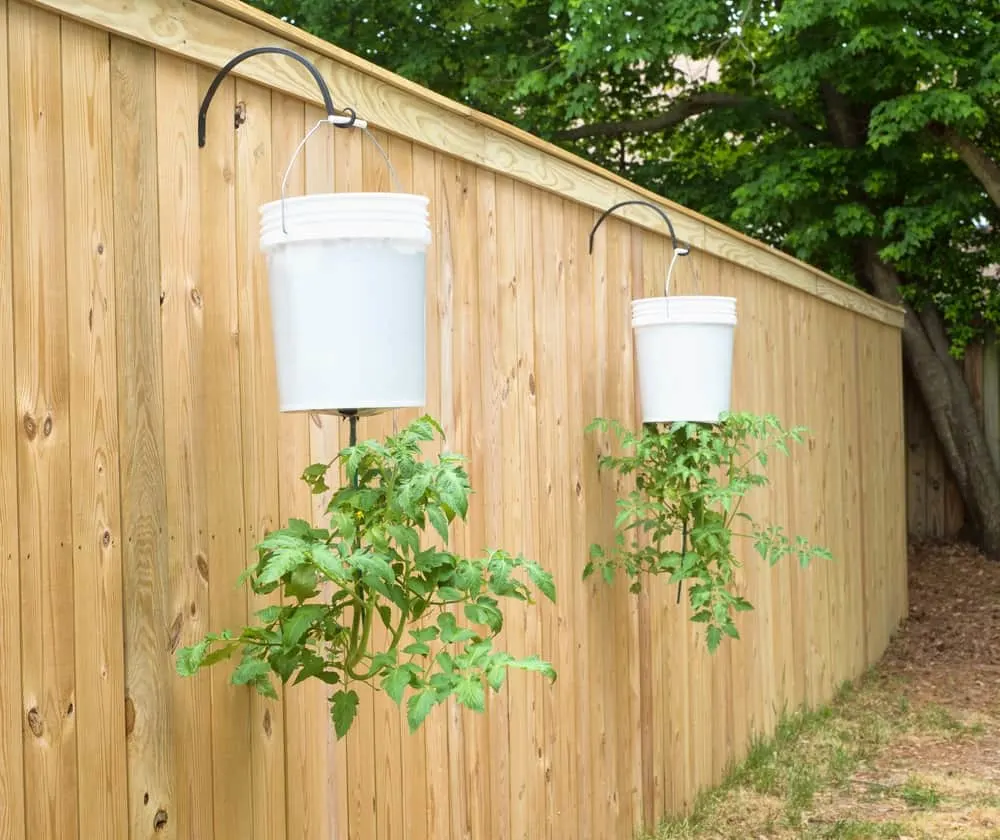
Another thing to remember about growing tomatoes in containers is that they need significantly more water than those in the ground.
Tomatoes planted in the ground have the ability to push their roots deep down into the earth to find water and nutrients. Tomatoes grown in containers are entirely at your mercy for their care.
At the very least, tomatoes in containers will need to be deeply watered several times per week. In super hot and sunny weather, they’ll need water every day, sometimes several times per day.
6. Choosing The Right Tomatoes For Your Grow Zone
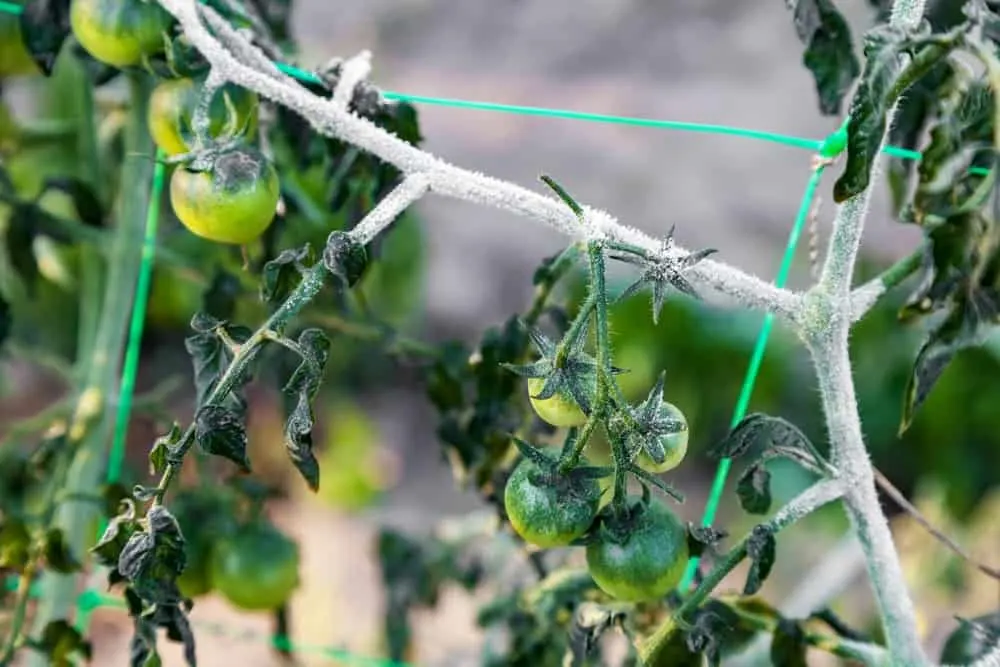
If you plan to actually harvest fruit from your tomato plants this summer, it’s essential to choose varieties that will mature completely during your growing season.
For instance, if the number of days between last frost and first frost in your region is 60 days, you wouldn’t want to choose a tomato variety that takes 70 days to mature.
Giving your plants enough time to grow to harvest before the days grow cold and snowy is absolutely essential to a bountiful harvest.
Before buying seeds or tomato seedlings, take note of the ‘Days to maturity’ line and only choose varieties that stand a chance to mature in the time you have for your particular growing season.
Popular fast maturing tomato varieties include: Bush Beefsteak, Bloody Butcher, Gardener’s Delight, Matina, Stupice and Sungold.
There are ways to speed up the rate at which your tomatoes ripen. Here’s ten tips to ripen your tomatoes quicker.
7. Transplanting
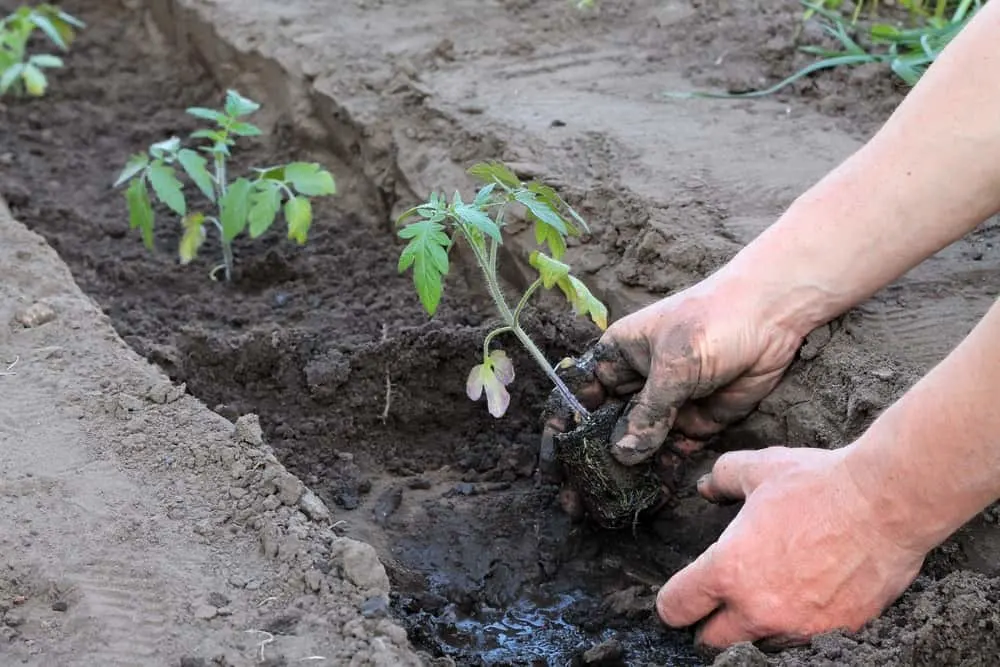
Most backyard vegetables are simple to transplant, but tomatoes take some extra care.
Tomato plants are special in that they can grow new roots from their stems.
Plant your tomatoes deep into the soil, and they’ll grow new strong roots all along the buried stem, making for a stronger plant that can take up more nutrients over the growing season.
When transplanting tomatoes, we always dig a hole deep enough to cover the plant up to the first true leaves.
8. Tomato Pest Control
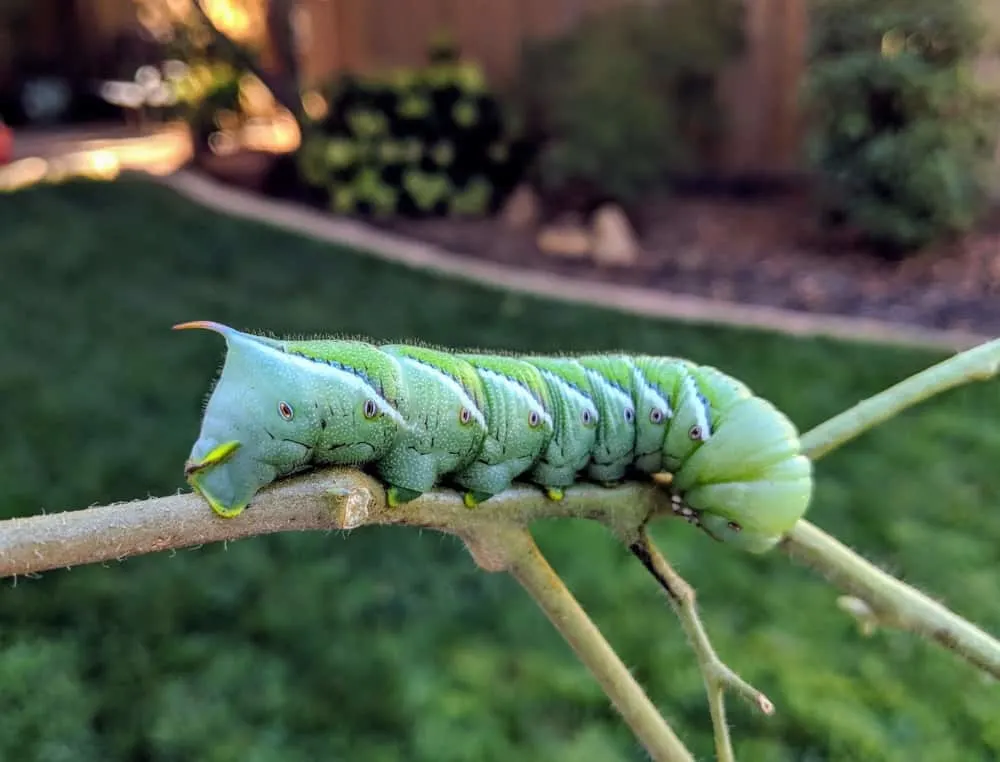
There are several pests that are known to plague tomatoes. If these critters go unchecked, they can decimate an entire plant in just a few days.
Tomato hornworms, slugs, and aphids are the most likely pests you’ll encounter on your tomatoes.
Aphids are common in the garden, and in small numbers they’re nothing to worry about. In large numbers, however, aphids can easily destroy your tomato plants.
If you happen upon a large infestation of aphids on your plants, there are two options that are known to help. Buying a pack of ladybugs online and releasing them in the garden is sure to help, as ladybugs feast on aphids.
Another surefire way to get rid of aphids on tomatoes is to use insecticidal soap. You can make an organic insecticidal soap at home really easily.
Hornworms are tricky because of their exceptional camouflage. They can hide in plain site, and only a keen eye can spot them while they’re still.
Hornworms can be easily plucked off tomato plants and killed, but it may take daily checks to get rid of them before they take over.
You don’t need to tell the neighborhood slugs you’re growing tomatoes, they’ll find them all on their own.
These slimy pests are among the worst garden pests, as they feed on foliage, leaving large holes and damaged plants.
To get rid of slugs, you can hand pick them and destroy them, set out beer traps, or sprinkle Diatomaceous Earth around your tomato plants to prevent slug access to them.
9. Caging Tomatoes
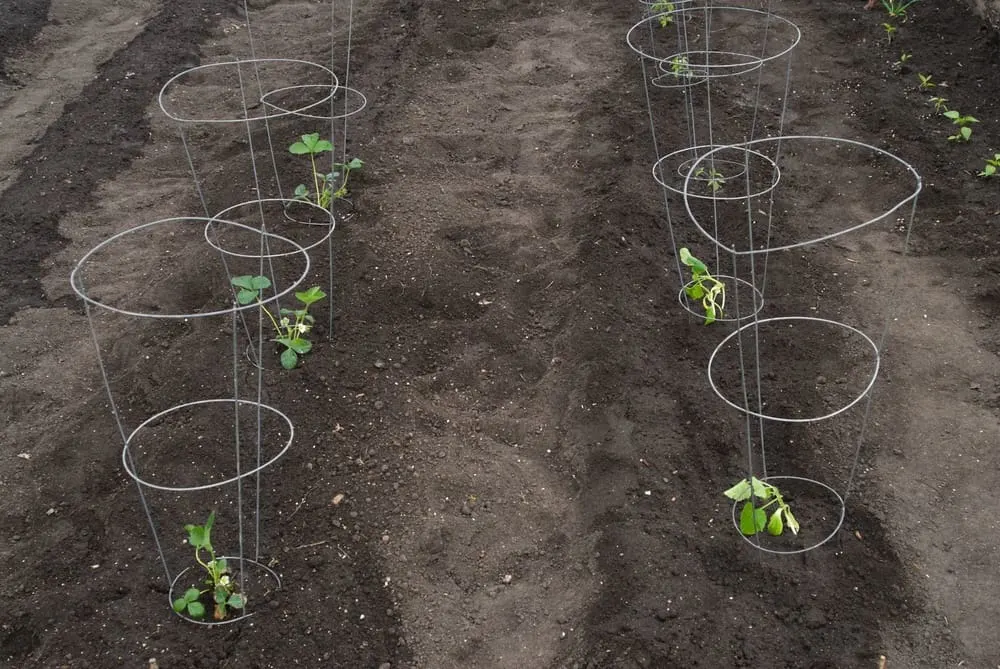
Tomatoes are large unwieldy plants that tend to grow too big for their own good.
When tomato plants get really large, they’ll naturally fall to the ground, leaving them more susceptible to disease, pests, and rotten fruit.
We’ve found tomato cages to be the easiest and most reliable way to keep tomatoes standing upright. The new cages (such as these) that are wider at the bottom and narrower at the top are ideal because they’re not likely to fall over in strong winds.
Cage your tomatoes early, within the first few weeks after transplanting, so you don’t have to deal with wily branches.
Here are more ideas for supporting your tomato plants.
10. Recognizing Problems
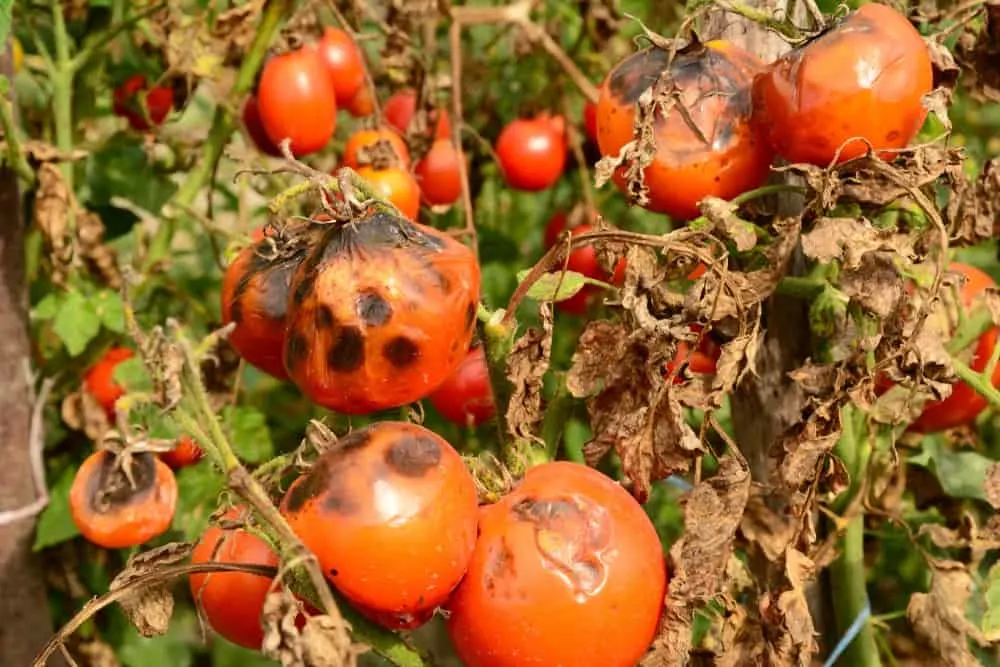
While it would be nice if they could, plants can’t tell us when something is wrong with them, so it’s up to us to pay attention to warning signs.
Issues to look for:
Holes in leaves – Search for garden pests, both during the day and at night and treat accordingly
Wilting – Water more frequently
Black leaves – likely caused by tomato blight. To prevent blight, be sure to rotate the location of your tomato bed every year, give plants lots of room to breathe by not planting too close together, and spray with fungicide throughout the growing season.
Black spots on fruit – Tomatoes on the vine sometimes get black spots on the bottom, called blossom end rot. This is usually caused by a calcium deficiency. A good tomato fertilizer will help the issue, or you can put crushed egg shells in the soil around the plant.
Cracked fruit – Cracked tomatoes are usually caused by inconsistent watering. If the tomato isn’t getting enough water, then suddenly gets a huge surge of water, the fruit will balloon up too quickly, causing cracks. These cracks usually heal over before harvest time, and while they’re not pretty, they’re not harmful.
Here’s a more thorough list of the most common tomato growing problems and how to deal with them.
Now that you’re well equipped with these pro tomato growing tips, you’re on your way to a bountiful harvest this summer!
Don’t let your tomatoes go to waste!
If your tomato plants perform successfully this year, you may have more tomatoes than you know what to do with.
Take a look at our article sharing 26 ways to preserve a bounty of tomatoes to make sure you don’t let any of your delicious harvest go to waste.

Get the famous Rural Sprout newsletter delivered to your inbox.
Including Sunday ramblings from our editor, Tracey, as well as “What’s Up Wednesday” our roundup of what’s in season and new article updates and alerts.

